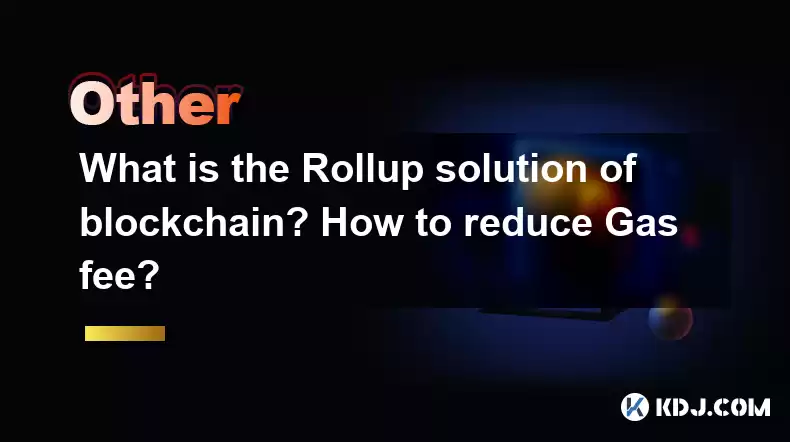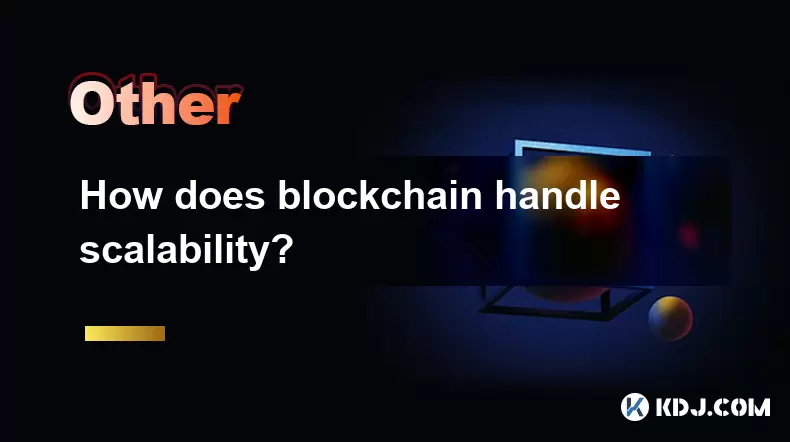-
 Bitcoin
Bitcoin $112400
-1.07% -
 Ethereum
Ethereum $3409
-3.27% -
 XRP
XRP $2.784
-6.60% -
 Tether USDt
Tether USDt $0.9997
-0.03% -
 BNB
BNB $739.3
-2.09% -
 Solana
Solana $158.0
-2.90% -
 USDC
USDC $0.9998
-0.02% -
 TRON
TRON $0.3213
-0.94% -
 Dogecoin
Dogecoin $0.1929
-5.01% -
 Cardano
Cardano $0.6974
-2.82% -
 Hyperliquid
Hyperliquid $36.69
-2.31% -
 Sui
Sui $3.327
-4.80% -
 Stellar
Stellar $0.3672
-5.18% -
 Chainlink
Chainlink $15.65
-3.07% -
 Bitcoin Cash
Bitcoin Cash $525.0
-1.68% -
 Hedera
Hedera $0.2291
-6.00% -
 Avalanche
Avalanche $20.91
-2.96% -
 Ethena USDe
Ethena USDe $1.000
0.00% -
 Toncoin
Toncoin $3.520
-1.12% -
 UNUS SED LEO
UNUS SED LEO $8.968
0.14% -
 Litecoin
Litecoin $105.7
0.26% -
 Shiba Inu
Shiba Inu $0.00001181
-1.79% -
 Polkadot
Polkadot $3.492
-2.08% -
 Uniswap
Uniswap $8.800
-3.10% -
 Dai
Dai $0.9999
-0.01% -
 Monero
Monero $289.9
-3.17% -
 Bitget Token
Bitget Token $4.243
-1.27% -
 Pepe
Pepe $0.00001006
-3.67% -
 Cronos
Cronos $0.1248
-5.68% -
 Aave
Aave $249.7
-2.50%
What is the Rollup solution of blockchain? How to reduce Gas fee?
Rollup solutions enhance blockchain scalability by processing transactions off-chain and batching them, significantly reducing gas fees and increasing throughput.
Apr 28, 2025 at 04:07 am

Introduction to Rollup Solutions in Blockchain
Blockchain technology, while revolutionary, faces significant challenges, particularly in terms of scalability and transaction fees. One of the most promising solutions to these issues is the Rollup technology. Rollup solutions aim to increase the throughput of blockchain networks and reduce the high gas fees associated with transactions. This article delves into the concept of Rollup solutions, their types, and how they help in reducing gas fees on blockchain networks.
What are Rollup Solutions?
Rollup solutions are layer 2 scaling solutions that process transactions off the main blockchain (layer 1) and then post the transaction data back to the blockchain in batches. This method significantly reduces the load on the main chain, thereby increasing its capacity and lowering the costs associated with each transaction. There are two main types of Rollup solutions: Optimistic Rollups and ZK-Rollups.
Optimistic Rollups
Optimistic Rollups operate on the principle of assuming transactions are valid by default. They batch multiple transactions together and submit them to the main blockchain. If no one disputes a transaction within a certain challenge period, it is considered final. This method reduces the amount of data that needs to be stored on the main blockchain, thus lowering the gas fees.
- How Optimistic Rollups Work:
- Transactions are executed off-chain.
- The results are batched and submitted to the main blockchain.
- A fraud-proof mechanism allows anyone to challenge incorrect transactions within a designated period.
- If no challenges are raised, the transactions are finalized.
ZK-Rollups
ZK-Rollups, or Zero-Knowledge Rollups, use cryptographic proofs to validate transactions. They also batch multiple transactions off-chain but use zero-knowledge proofs to ensure the validity of the transactions without revealing the transaction details. This method not only reduces the data footprint on the main blockchain but also enhances privacy.
- How ZK-Rollups Work:
- Transactions are processed off-chain.
- A zero-knowledge proof is generated for each batch of transactions.
- The batch and the proof are submitted to the main blockchain.
- The main blockchain verifies the proof without needing to know the transaction details.
How Rollup Solutions Reduce Gas Fees
Rollup solutions reduce gas fees by minimizing the amount of data that needs to be processed and stored on the main blockchain. Since gas fees are primarily determined by the computational resources required to process transactions, batching multiple transactions into a single submission significantly lowers these costs.
Reduction in Data Storage:
- By processing transactions off-chain and only submitting the necessary data to the main blockchain, Rollup solutions reduce the storage requirements on the main chain.
Batching Transactions:
- Batching multiple transactions into a single submission reduces the number of individual transactions that need to be processed, thereby lowering the overall gas fees.
Efficient Use of Blockchain Resources:
- Rollup solutions make more efficient use of the blockchain's computational resources, allowing more transactions to be processed for the same amount of gas.
Implementing Rollup Solutions
To implement Rollup solutions and benefit from reduced gas fees, users need to interact with specific protocols and platforms that support these technologies. Here’s a step-by-step guide on how to use Rollup solutions:
Choosing a Rollup Platform:
- Research and select a platform that supports either Optimistic Rollups or ZK-Rollups, such as Arbitrum, Optimism, or StarkWare.
Setting Up a Wallet:
- Ensure you have a compatible wallet that supports the chosen Rollup platform. For instance, MetaMask can be used with many Rollup solutions.
Depositing Funds:
- Transfer your assets from the main blockchain to the Rollup platform. This typically involves a one-time deposit fee.
Executing Transactions:
- Use the Rollup platform to execute your transactions. These transactions will be processed off-chain and batched together before being submitted to the main blockchain.
Withdrawing Funds:
- When you need to move your assets back to the main blockchain, initiate a withdrawal. Note that withdrawals might take longer due to the challenge period in Optimistic Rollups.
Conclusion on Rollup Solutions and Gas Fees
Rollup solutions represent a significant advancement in blockchain scalability and cost efficiency. By processing transactions off-chain and submitting them in batches, these solutions reduce the load on the main blockchain, leading to lower gas fees and higher transaction throughput. Whether through Optimistic Rollups or ZK-Rollups, users can now enjoy faster and cheaper transactions on blockchain networks.
Frequently Asked Questions
Q1: Can Rollup solutions be used with any blockchain?
A1: Rollup solutions are primarily designed for Ethereum and its compatible networks. However, the concept can be adapted to other blockchains, provided they support smart contracts and have the necessary infrastructure.
Q2: Are there any risks associated with using Rollup solutions?
A2: Yes, there are risks. For Optimistic Rollups, there is a risk of fraudulent transactions if the challenge period is not properly utilized. For ZK-Rollups, the complexity of zero-knowledge proofs can lead to implementation errors. Users should always research and understand the specific risks associated with the Rollup platform they choose.
Q3: How long does it take to finalize a transaction using Rollup solutions?
A3: The time to finalize a transaction varies. For Optimistic Rollups, transactions are considered final after the challenge period, which can take several days. ZK-Rollups, on the other hand, can finalize transactions much faster, often within minutes, due to the immediate validation provided by zero-knowledge proofs.
Q4: Can Rollup solutions be combined with other scaling solutions?
A4: Yes, Rollup solutions can be combined with other layer 2 solutions like sidechains and state channels to further enhance scalability and reduce costs. This multi-layered approach can provide even greater efficiency and flexibility for blockchain networks.
Disclaimer:info@kdj.com
The information provided is not trading advice. kdj.com does not assume any responsibility for any investments made based on the information provided in this article. Cryptocurrencies are highly volatile and it is highly recommended that you invest with caution after thorough research!
If you believe that the content used on this website infringes your copyright, please contact us immediately (info@kdj.com) and we will delete it promptly.
- Ruvi AI: The Millionaire Maker with a Price Spike on the Horizon?
- 2025-08-03 02:50:12
- DOGE, Utility Coins, and Smart Money: A New Era for Crypto Investing?
- 2025-08-03 02:50:12
- Punisher Coin: Is This Meme Coin the Crypto Investment with 100x ROI Potential?
- 2025-08-03 03:30:12
- Ruvi AI, XRP, and CoinMarketCap: Decoding the Crypto Buzz
- 2025-08-03 03:30:12
- Solana, WeWake, and Presales: What's Hot in the Crypto Space?
- 2025-08-03 03:35:25
- MoonBull, LOFI Pepe: Navigating the Meme Coin Mania and the Best Crypto Whitelist
- 2025-08-03 04:10:12
Related knowledge

What is the difference between on-chain and off-chain transactions?
Aug 02,2025 at 04:22pm
Understanding On-Chain TransactionsOn-chain transactions refer to digital asset transfers that are recorded directly on a blockchain ledger. These tra...

What is the double-spending problem and how does blockchain prevent it?
Aug 02,2025 at 01:07pm
Understanding the Double-Spending ProblemThe double-spending problem is a fundamental challenge in digital currency systems where the same digital tok...

What is the difference between a blockchain and a database?
Aug 01,2025 at 09:36pm
Understanding the Core Structure of a BlockchainA blockchain is a decentralized digital ledger that records data in a series of immutable blocks linke...

How does blockchain handle scalability?
Aug 02,2025 at 02:58pm
Understanding Blockchain Scalability ChallengesBlockchain scalability refers to a network's ability to handle an increasing volume of transactions wit...

What are the different types of blockchains?
Aug 03,2025 at 03:01am
Public Blockchains: Open and Decentralized NetworksPublic blockchains are the most widely recognized type of blockchain, characterized by their open a...

What is a hash in a blockchain?
Aug 02,2025 at 05:28am
Understanding the Concept of Hash in BlockchainA hash in the context of blockchain technology refers to a unique digital fingerprint generated by a cr...

What is the difference between on-chain and off-chain transactions?
Aug 02,2025 at 04:22pm
Understanding On-Chain TransactionsOn-chain transactions refer to digital asset transfers that are recorded directly on a blockchain ledger. These tra...

What is the double-spending problem and how does blockchain prevent it?
Aug 02,2025 at 01:07pm
Understanding the Double-Spending ProblemThe double-spending problem is a fundamental challenge in digital currency systems where the same digital tok...

What is the difference between a blockchain and a database?
Aug 01,2025 at 09:36pm
Understanding the Core Structure of a BlockchainA blockchain is a decentralized digital ledger that records data in a series of immutable blocks linke...

How does blockchain handle scalability?
Aug 02,2025 at 02:58pm
Understanding Blockchain Scalability ChallengesBlockchain scalability refers to a network's ability to handle an increasing volume of transactions wit...

What are the different types of blockchains?
Aug 03,2025 at 03:01am
Public Blockchains: Open and Decentralized NetworksPublic blockchains are the most widely recognized type of blockchain, characterized by their open a...

What is a hash in a blockchain?
Aug 02,2025 at 05:28am
Understanding the Concept of Hash in BlockchainA hash in the context of blockchain technology refers to a unique digital fingerprint generated by a cr...
See all articles

























































































